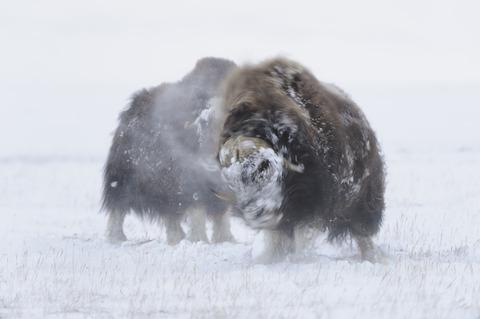当前位置:
X-MOL 学术
›
Ecol. Evol.
›
论文详情
Our official English website, www.x-mol.net, welcomes your feedback! (Note: you will need to create a separate account there.)
Quantifying energetic and fitness consequences of seasonal heterothermy in an Arctic ungulate
Ecology and Evolution ( IF 2.6 ) Pub Date : 2020-11-22 , DOI: 10.1002/ece3.7049 Jean‐Pierre Desforges 1, 2, 3 , Floris M. Beest 1, 2 , Gonçalo M. Marques 4 , Stine H. Pedersen 5, 6 , Larissa T. Beumer 1 , Marianna Chimienti 1 , Niels Martin Schmidt 1, 2
Ecology and Evolution ( IF 2.6 ) Pub Date : 2020-11-22 , DOI: 10.1002/ece3.7049 Jean‐Pierre Desforges 1, 2, 3 , Floris M. Beest 1, 2 , Gonçalo M. Marques 4 , Stine H. Pedersen 5, 6 , Larissa T. Beumer 1 , Marianna Chimienti 1 , Niels Martin Schmidt 1, 2
Affiliation

|
Animals have adapted behavioral and physiological strategies to conserve energy during periods of adverse conditions. Heterothermy is one such adaptation used by endotherms. While heterothermy—fluctuations in body temperature and metabolic rate—has been shown in large vertebrates, little is known of the costs and benefits of this strategy, both in terms of energy and in terms of fitness. Hence, our objective was to model the energetics of seasonal heterothermy in the largest Arctic ungulate, the muskox (Ovibos moschatus), using an individual‐based energy budget model of metabolic physiology. We found that the empirically based drop in body temperature (winter max ~−0.8°C) overwinter in adult females resulted in substantial fitness benefits in terms of reduced daily energy expenditure and body mass loss. Body mass and energy reserves were 8.98% and 14.46% greater in modeled heterotherms compared to normotherms by end of winter. Based on environmental simulations, we show that seasonal heterothermy can, to some extent, buffer the negative consequences of poor prewinter body condition or reduced winter food accessibility, leading to greater winter survival (+20%–30%) and spring energy reserves (+10%–30%), and thus increased probability of future reproductive success. These results indicate substantial adaptive short‐term benefits of seasonal heterothermy at the individual level, with potential implications for long‐term population dynamics in highly seasonal environments.
中文翻译:

量化北极有蹄类动物的季节性异热的能量和适应性后果
动物已经适应了行为和生理策略,以在不利条件期间节省能量。异热是吸热所使用的一种这样的适应。虽然在大型脊椎动物中已显示出体温和代谢率的波动的异温热疗法,但从能量和适应性方面,对该策略的成本和收益知之甚少。因此,我们的目标是模拟最大的北极有蹄类动物麝香(Ovibos moschatus),使用基于个体的代谢生理学能量预算模型。我们发现,根据经验,成年女性的体温下降(冬季最高〜-0.8°C越冬)在减少日常能量消耗和体重减轻方面带来了巨大的健身益处。到冬季结束时,模型常温的体重和能量储备比常温高8.98%和14.46%。根据环境模拟,我们表明,季节性异温可以在某种程度上缓解冬季前身体状况不佳或冬季食物可及性降低的负面影响,从而提高冬季生存率(+ 20%–30%)和春季能量储备(+ 10%–30%),从而增加了未来生殖成功的可能性。
更新日期:2021-01-08
中文翻译:

量化北极有蹄类动物的季节性异热的能量和适应性后果
动物已经适应了行为和生理策略,以在不利条件期间节省能量。异热是吸热所使用的一种这样的适应。虽然在大型脊椎动物中已显示出体温和代谢率的波动的异温热疗法,但从能量和适应性方面,对该策略的成本和收益知之甚少。因此,我们的目标是模拟最大的北极有蹄类动物麝香(Ovibos moschatus),使用基于个体的代谢生理学能量预算模型。我们发现,根据经验,成年女性的体温下降(冬季最高〜-0.8°C越冬)在减少日常能量消耗和体重减轻方面带来了巨大的健身益处。到冬季结束时,模型常温的体重和能量储备比常温高8.98%和14.46%。根据环境模拟,我们表明,季节性异温可以在某种程度上缓解冬季前身体状况不佳或冬季食物可及性降低的负面影响,从而提高冬季生存率(+ 20%–30%)和春季能量储备(+ 10%–30%),从而增加了未来生殖成功的可能性。



























 京公网安备 11010802027423号
京公网安备 11010802027423号